Kerem C. Tezcan
Active label cleaning: Improving dataset quality under resource constraints
Sep 01, 2021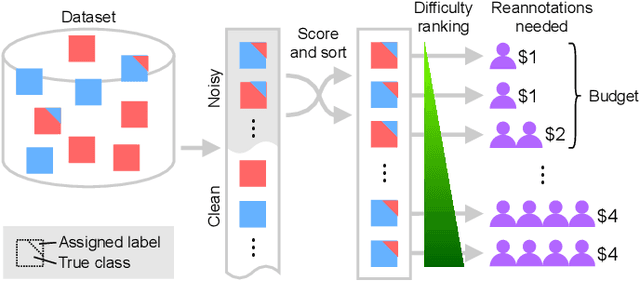
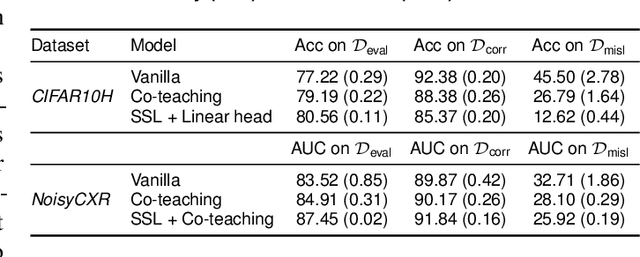
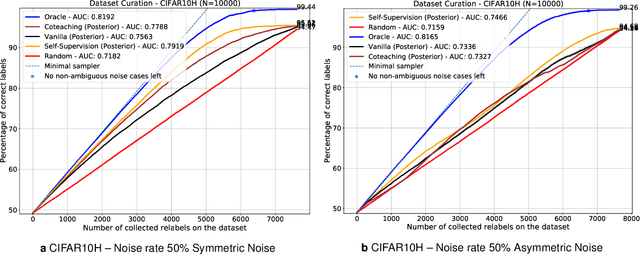
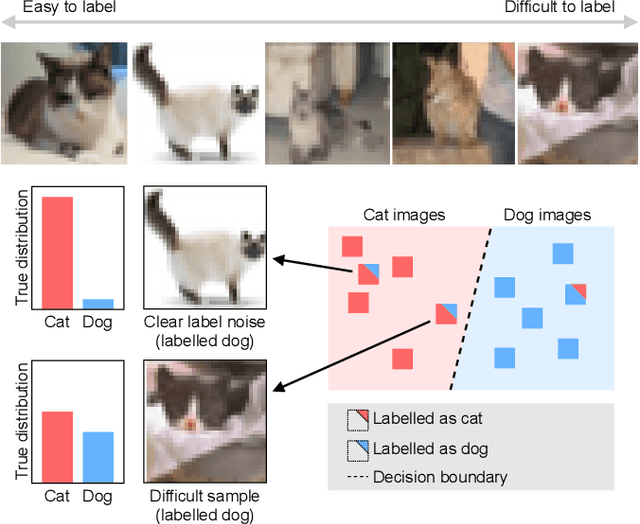
Abstract:Imperfections in data annotation, known as label noise, are detrimental to the training of machine learning models and have an often-overlooked confounding effect on the assessment of model performance. Nevertheless, employing experts to remove label noise by fully re-annotating large datasets is infeasible in resource-constrained settings, such as healthcare. This work advocates for a data-driven approach to prioritising samples for re-annotation - which we term "active label cleaning". We propose to rank instances according to estimated label correctness and labelling difficulty of each sample, and introduce a simulation framework to evaluate relabelling efficacy. Our experiments on natural images and on a new medical imaging benchmark show that cleaning noisy labels mitigates their negative impact on model training, evaluation, and selection. Crucially, the proposed active label cleaning enables correcting labels up to 4 times more effectively than typical random selection in realistic conditions, making better use of experts' valuable time for improving dataset quality.
Sampling possible reconstructions of undersampled acquisitions in MR imaging
Sep 30, 2020



Abstract:Undersampling the k-space during MR acquisitions saves time, however results in an ill-posed inversion problem, leading to an infinite set of images as possible solutions. Traditionally, this is tackled as a reconstruction problem by searching for a single "best" image out of this solution set according to some chosen regularization or prior. This approach, however, misses the possibility of other solutions and hence ignores the uncertainty in the inversion process. In this paper, we propose a method that instead returns multiple images which are possible under the acquisition model and the chosen prior. To this end, we introduce a low dimensional latent space and model the posterior distribution of the latent vectors given the acquisition data in k-space, from which we can sample in the latent space and obtain the corresponding images. We use a variational autoencoder for the latent model and the Metropolis adjusted Langevin algorithm for the sampling. This approach allows us to obtain multiple possible images and capture the uncertainty in the inversion process under the used prior. We evaluate our method on images from the Human Connectome Project dataset as well as in-house measured multi-coil images and compare to two different methods. The results indicate that the proposed method is capable of producing images that match the ground truth in regions where acquired k-space data is informative and construct different possible reconstructions, which show realistic structural variations, in regions where acquired k-space data is not informative. Keywords: Magnetic Resonance image reconstruction, uncertainty estimation, inverse problems, sampling, MCMC, deep learning, unsupervised learning.
Joint reconstruction and bias field correction for undersampled MR imaging
Jul 26, 2020

Abstract:Undersampling the k-space in MRI allows saving precious acquisition time, yet results in an ill-posed inversion problem. Recently, many deep learning techniques have been developed, addressing this issue of recovering the fully sampled MR image from the undersampled data. However, these learning based schemes are susceptible to differences between the training data and the image to be reconstructed at test time. One such difference can be attributed to the bias field present in MR images, caused by field inhomogeneities and coil sensitivities. In this work, we address the sensitivity of the reconstruction problem to the bias field and propose to model it explicitly in the reconstruction, in order to decrease this sensitivity. To this end, we use an unsupervised learning based reconstruction algorithm as our basis and combine it with a N4-based bias field estimation method, in a joint optimization scheme. We use the HCP dataset as well as in-house measured images for the evaluations. We show that the proposed method improves the reconstruction quality, both visually and in terms of RMSE.
PHiSeg: Capturing Uncertainty in Medical Image Segmentation
Jun 07, 2019

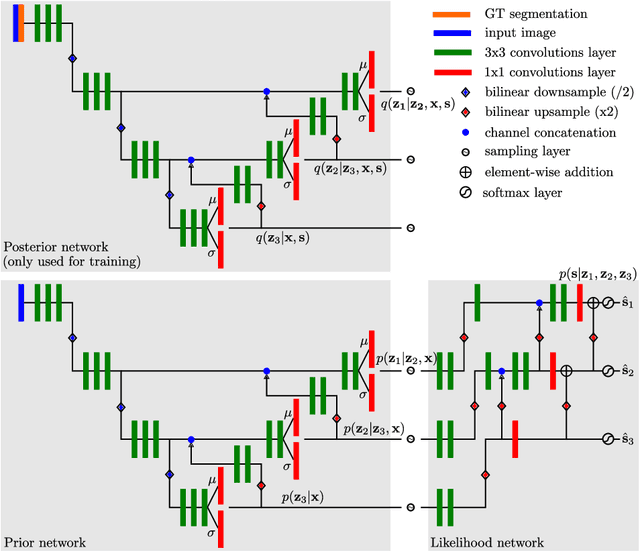
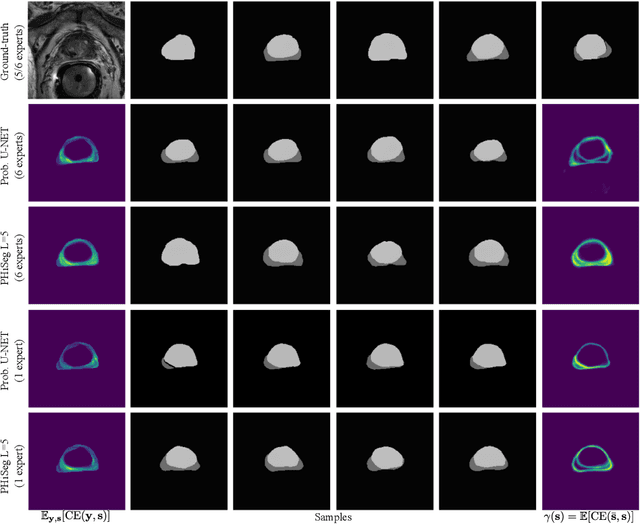
Abstract:Segmentation of anatomical structures and pathologies is inherently ambiguous. For instance, structure borders may not be clearly visible or different experts may have different styles of annotating. The majority of current state-of-the-art methods do not account for such ambiguities but rather learn a single mapping from image to segmentation. In this work, we propose a novel method to model the conditional probability distribution of the segmentations given an input image. We derive a hierarchical probabilistic model, in which separate latent spaces are responsible for modelling the segmentation at different resolutions. Inference in this model can be efficiently performed using the variational autoencoder framework. We show that our proposed method can be used to generate significantly more realistic and diverse segmentation samples compared to recent related work, both, when trained with annotations from a single or multiple annotators.
MR image reconstruction using deep density priors
Jan 17, 2018


Abstract:Purpose: MR image reconstruction exploits regularization to compensate for missing k-space data. In this work, we propose to learn the probability distribution of MR image patches with neural networks and use this distribution as prior information constraining images during reconstruction, effectively employing it as regularization. Methods: We use variational autoencoders (VAE) to learn the distribution of MR image patches, which models the high-dimensional distribution by a latent parameter model of lower dimensions in a non-linear fashion. The proposed algorithm uses the learned prior in a Maximum-A-Posteriori estimation formulation. We evaluate the proposed reconstruction method with T1 weighted images and also apply our method on images with white matter lesions. Results: Visual evaluation of the samples showed that the VAE algorithm can approximate the distribution of MR patches well. The proposed reconstruction algorithm using the VAE prior produced high quality reconstructions. The algorithm achieved normalized RMSE, CNR and CN values of 2.77\%, 0.43, 0.11; 4.29\%, 0.43, 0.11, 6.36\%, 0.47, 0.11 and 10.00\%, 0.42, 0.10 for undersampling ratios of 2, 3, 4 and 5, respectively, where it outperformed most of the alternative methods. In the experiments on images with white matter lesions, the method faithfully reconstructed the lesions. Conclusion: We introduced a novel method for MR reconstruction, which takes a new perspective on regularization by using priors learned by neural networks. Results suggest the method compares favorably against the other evaluated methods and can reconstruct lesions as well. Keywords: Reconstruction, MRI, prior probability, MAP estimation, machine learning, variational inference, deep learning
 Add to Chrome
Add to Chrome Add to Firefox
Add to Firefox Add to Edge
Add to Edge